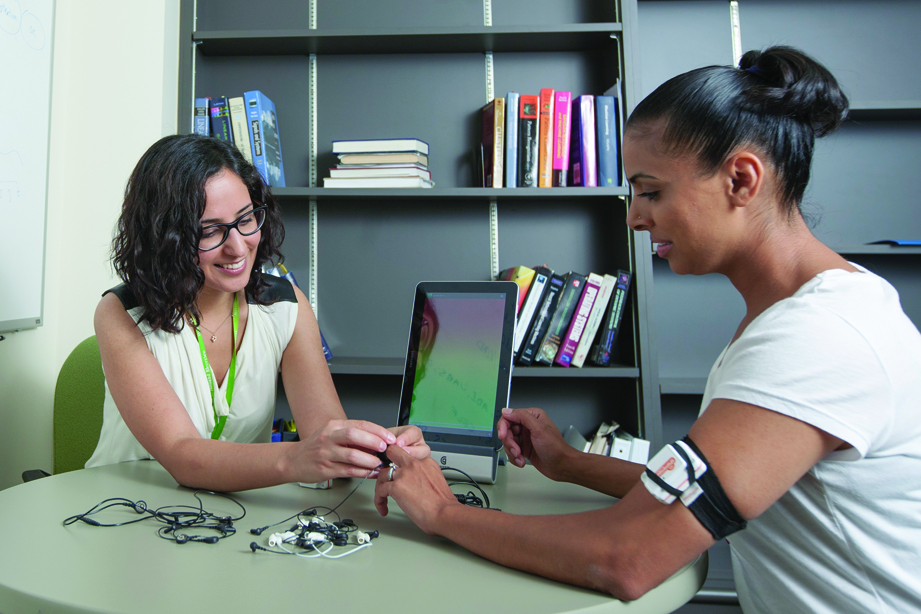Augmented Cognitive Behavioural Therapy for Anxiety (Anxiety Meter)
Project Category: Projects – Cycle II
December 14, 2020

Challenge
Anxiety is common among children and youth living with Autism Spectrum Disorder, and it can be very debilitating. An estimated 40 percent of young people with ASD also have at least one anxiety-related diagnosis, such as a phobia, social anxiety disorder or obsessive-compulsive disorder.
We know that cognitive-behavioural therapy (CBT) can help with these issues. Still, it works best when the patient can recognize and communicate their emotional states, something that often doesn’t come easily to people with ASD.
Project Summary
To make CBT more accessible for kids who are minimally verbal or who have trouble identifying when they are anxious, Dr. Kushki with the ASD team at KBHN developed a smart-phone app called Anxiety Meter. Also compatible with tablets and smartwatches, it connects wirelessly to wearable sensors that measure physiological signs of anxiety, such as heart rate. These are represented visually on the screen: for example, a bar moves from green to red, signalling to the child and their caregivers that it might be a good time to try deep breathing or another calming strategy that they learned from CBT. The screen also shows an “anxiety bug” that the young person can crush. It thus acknowledges the feelings they are experiencing and empowers them with a sense that they can manage those feelings.
Result
The Anxiety Meter showed promise in the clinical trial, and a partnership with the Ontario Science Centre was formed to analyze data and continue to refine the tool. The long-term goal is to establish the effectiveness of the Anxiety Meter and prepare it for commercialization and everyday use.
Funding
This subproject was part of the larger “ASD Program: Optimizing Development and Outcome in Children and Youth.” The ASD program was funded a total of $1,142,681 from the Kids Brain Health Network and $794,987 from participating partners.
Team
Principal Investigator
Azadeh Kushki, Holland Bloorview Kids, University of Toronto
Co-Investigator
Jessica Brian, Holland Bloorview Kids, University of Toronto